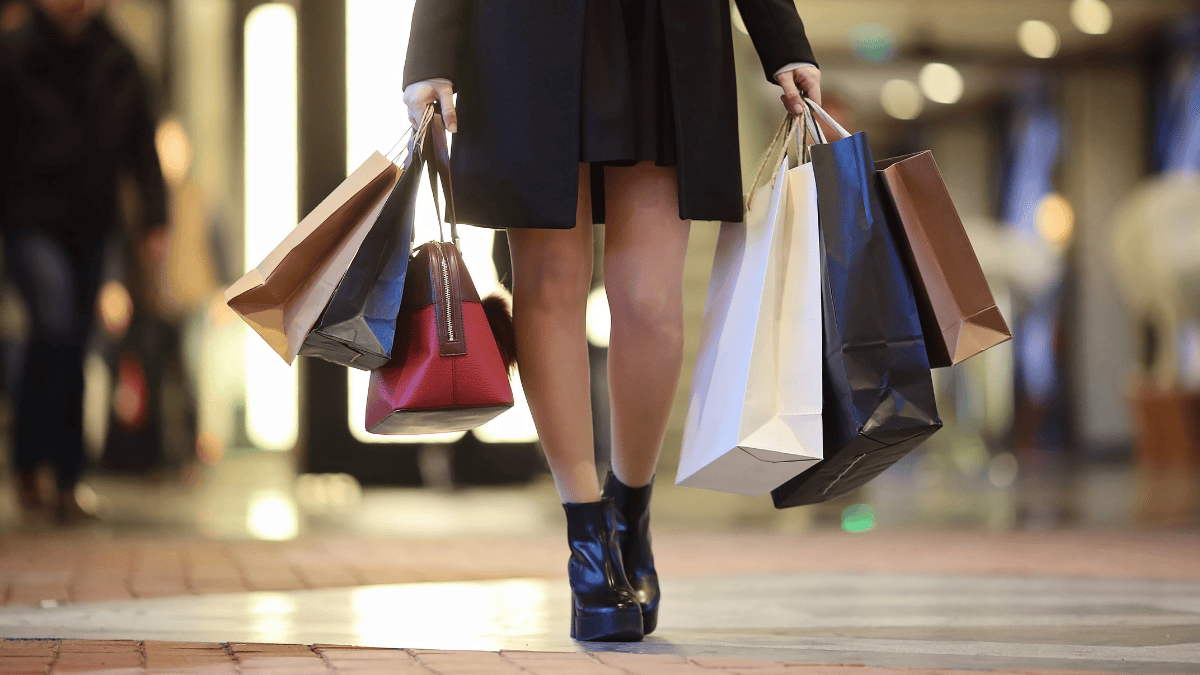The future of shopping includes unmanned stores or in-store robotics, 3D product configuration, and omni-channel agile marketing approach.
The unexpected occurrence of the novel coronavirus 2019 (COVID-19) pandemic marks the advent of retail technology revolution, which is the future of shopping. Recalling the previous year 2020, many businesses shifted from brick-and-mortar to online-based transactions drastically.
Economic and political pressure seemingly heightened the urgency of businesses to adopt the latest technology to align to the needs of modern, digitally inclined, and more health-conscious consumers. However, the future of shopping is not just about online shopping because it extends towards physical stores with retail technology.
The Next Normal
The new normal is now when consumers are adapting retail technology forced by social distancing and lockdowns. So more and more consumers are now shopping online, including the less tech-savvy consumers because of the great need to stay safe and distant from possible virus infection.
The next normal is after the surge and herd vaccination as foreseen in the near future. Even if everyone has received COVID-19 vaccination, consumers will never be the same as they were during the pre-COVID times. Hence, technology-enabled stores are the future of shopping.
The projected future earnings before interest and taxes (EBIT) will be double and even triple-fold as compared to the current time’s profitability. Therefore, it is necessary for retailers to act early and embrace retail technology such as warehouse-to-shelf automation and in-store robotics.
Unmanned Store or In-Store Robotics and why it failed
Amazon first released the retail concept of an unmanned store in December 2016, in Seattle, Washington USA, in which there are no cashiers or service personnel in the store to assist customers. In an unmanned retail store concept, all store transactions rely on using mobile applications and artificial intelligence, which eliminate the traditional features of a store.
In July 2017, Taobao, Jingdong, and WeChat launched their flash unmanned stores. Later on, Japan, Korea, and Taiwan also followed the unmanned retail concept. However, a rapid decline occurred in 2018, in which many stores with unmanned technology faced bankruptcy. The reason experts point out for this decline was the failure to create a genuine “just-walk-out” experience that took away the convenience of shopping. The focus was purely on technology. Many stores missed the customer experience aspect of operating their shops, which is what the industry attempts to resolve in the future of shopping through customer-focused retail technology.
Because of the COVID-19 pandemic, a number of retailers in Asia have started to reinvest in the unmanned store technology concept again. For instance, Japan began testing autonomous delivery robots on the streets, equipped with sensors and built-in cameras to avoid cars and pedestrians and wait at red lights. This retail technology concept aims to enhance the customer shopping experience by using robots to deliver products right at the doorsteps with just one tap on the smartphone.
Enhanced Automation Shopping Experience
Retail technology has matured with the strike of the pandemic. Social distancing promoted cashless payments and the use of 5G internet connectivity proliferated, enhancing the automation of customer shopping experience.
AiFi, a California-based tech startup, takes advantage of lightning-fast internet connectivity as it debuts the largest hybrid unmanned store in China. According to Steve Gu, the CEO and co-founder of AiFi, this hybrid approach enables retailers to introduce the autonomous customer experience and eliminate waiting in line while avoiding crowds.
Tracking shopping behaviour as customers travel and choose items throughout the store accurately is made possible by using AiFi’s proprietary computer vision solution and autonomous store platform.
Omnichannel and Agile Approach
Omnichannel aims to make shopping seamless regardless of whether the customer is shopping online or in a brick-and-mortar store. This multichannel sales approach provides customers with an integrated and seamless shopping experience. Retailers need to expand from a single channel to provide more offerings to consumers such as through social media.
- Online-to-Offline Grocery Marketplace
For instance, India’s JioMart and Facebook have entered an alliance with the launching of the O2O (Online-to-Offline) grocery marketplace. JioMart-WhatsApp grocery service reinvents “kiranas” or local family-owned shops. O2O connects merchants to customers. India has more than 400 million WhatsApp users, which make up the largest community on this messaging app. Hence, the commercial partnership opens new opportunities for “kiranas” to sell their products within WhatsApp. - Virtual Consumer Experience And Easier Shipping Solutions
Consumers turn to online platforms for their shopping needs, which puts companies, such as Carousell, in a top position, tapping into the potentially US$300 billion internet economy of Southeast Asia. Singapore-based Carousell, one of the fastest-growing and largest marketplaces in South East Asia, invests in an agile approach.
The company focuses on becoming more profitable over the next three to four years. Carousell capitalised on virtual consumer experience via third-party platform partnerships. Virtual showroom viewing streamlines images, videos, live chat, and presentations in the Carousell app, which mimics the offline showroom experience.
In addition, Carousell expedited its efforts by establishing local delivery partnerships (such as with Lalamove, Gogovan, and GrabExpress) to provide easier shipping solutions, and discounted shipping rates. In addition, the Carousell and Malaysia postal service partnership enabled distribution across 7-11 convenience stores in Taiwan as a pick-up point for sellers and opened special rates.
Fashion Retail Digital Transformation
Digital transformation promotes more diverse customer journeys and increases direct engagement with customers. The fashion world embraces digital transformation to offer diverse options for customers. As a result, luxury goods companies invest in creating long-term ecommerce partnerships and digital technology.
Take the case of Compagnie Financière Richemont SA or Richemont, a Switzerland-based luxury goods company, for example. It beat analyst expectations, rebounding from the pandemic in Asia with 19 percent growth in sales for the fiscal year. Richemont remains the second-largest luxury goods group, forecasting increased double-digit sales in Asia’s Specialist Watchmakers division, owing to the opening of Alibaba Tmall Luxury Pavilion flagship stores and the Watches & Wonders fair participation in Sanya and Shanghai.
Enhanced Customer Experience
Development of more interactive features for online and in-store retail technology systems are on its way. The latest ecommerce trend is the three-dimensional (3D) product configuration that enables online shoppers to inspect items thoroughly before buying.
The future of shopping eliminates static images. With 3D product configuration, it involves creating three-dimensional product models, which resembles seeing the actual product with its more accurate details than professionally photographed images. In a 2021 technology insights report, Ford created interactive augmented reality (AR) videos to enhance customers’ experience for test drives. Potential customers of their latest electric Mustang Mach-E can explore all the car’s features using an interactive 3D model.
Consumers experience a unique feeling of the product in a virtual setting at home. For example, furniture retail stores can use 3D models to help customers envision the sofa or coffee table as if they already bought the furniture item and placed it in their living room. Hence, 3D configuration eliminates the obstacle of visual experience that only brick-and-mortar furniture stores were able to offer in the past.
Of course, 3D cloud retail solutions and virtual reality also mark the future of in-store shopping and even interior design, so customers can confidently explore more options. Customers will get excited and immerse themselves in their designs and future home improvements.
The Future Starts Now
In summary, the future of shopping involves the broad use of digital innovative solutions. Agile solutions enhance ecommerce and in-store sales through automation without compromising customer experience. With the increasing demand and use of social media, the Internet of Things (IoT), artificial intelligence (AI), cloud technology, virtual reality, and robotics, the shopping experience of consumers will be greatly involved in the future.


















